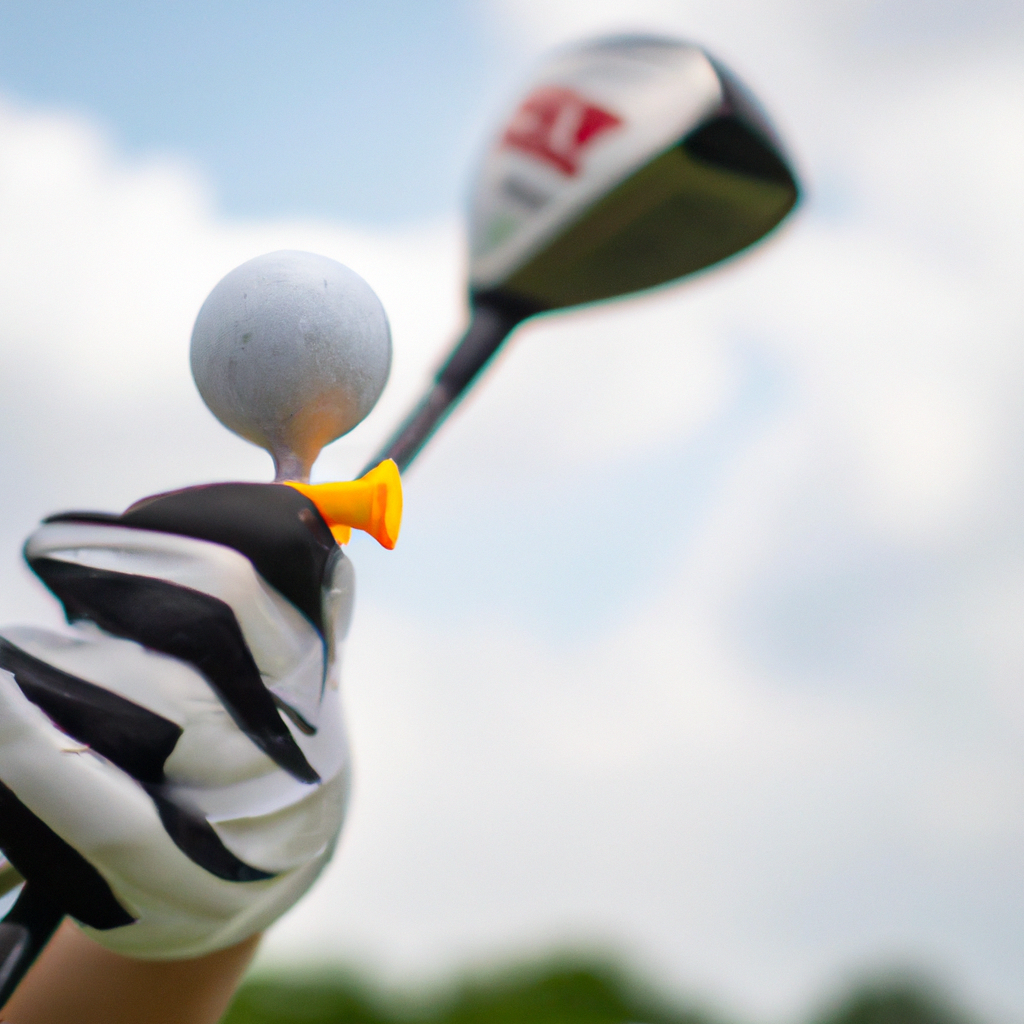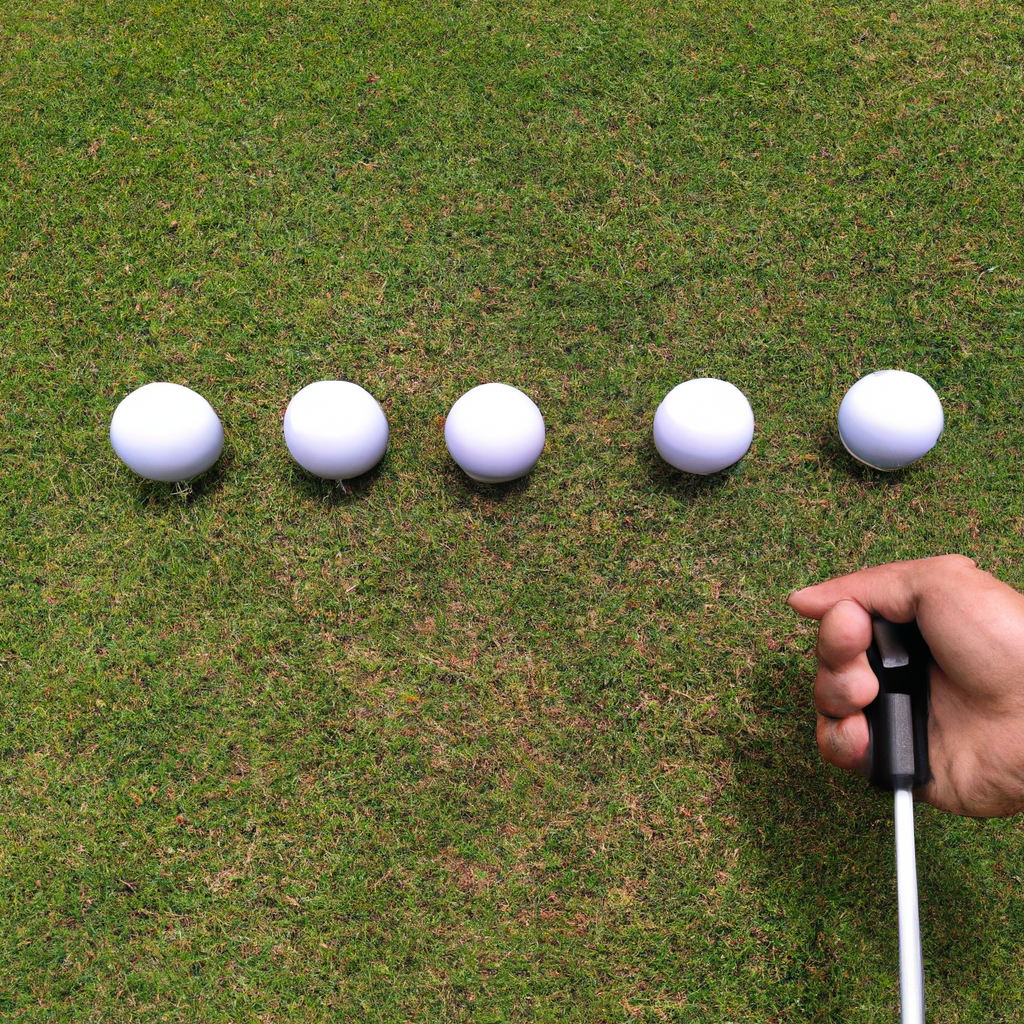In the world of golf, mastering the art of controlling ball flight is the key to success on the course. Understanding the various Here strategies and techniques to manipulate the trajectory and direction of your shots is essential for improving your overall game. Whether it’s adjusting your grip, ball position, or swing speed, every golfer must possess the ability to shape their shots according to the demands of each hole. By honing your skills in controlling ball flight, you can navigate through obstacles, avoid hazards, and ultimately lower your score. Join us as we delve into the intricacies of golf strategy for mastering the art of controlling ball flight.
Understanding Ball Flight in Golf

Basics of Ball Flight in Golf
In the realm of golf, understanding ball flight is crucial for players looking to improve their game. Ball flight refers to the trajectory and direction the ball takes after being struck by the club. It is influenced by various factors such as clubface angle, swing path, and impact conditions. By comprehending the basics of ball flight, golfers can gain more control over their shots and make strategic decisions on the course.
Factors Influencing Ball Flight
Several key factors come into play when determining the flight of a golf ball. The primary influences include the angle of the clubface at impact, the swing path of the club, the speed of the clubhead, and the spin imparted on the ball. These elements interact in complex ways to produce different types of ball flights, each requiring a specific approach from the golfer to achieve the desired result.
Types of Ball Flights (Fade, Draw, Straight)
In golf, there are three primary types of ball flights: the fade, the draw, and the straight shot. A fade is characterized by a gentle left-to-right trajectory for right-handed golfers, while a draw follows a right-to-left path. A straight shot, as the name suggests, travels directly without significant curvature. Mastering these different ball flights allows golfers to navigate various course layouts, avoid hazards, and set up optimal approaches to the green.
Importance of Controlling Ball Flight in Golf
Controlling ball flight is a fundamental aspect of golf strategy that can make the difference between success and frustration on the course. By being able to intentionally shape their shots and adjust for different conditions, golfers can improve their accuracy, distance, and overall performance. Understanding how to control ball flight empowers players to adapt to challenges, exploit scoring opportunities, and elevate their game to new heights.
Adjusting Swing for Desired Ball Flight
Adjusting your swing to achieve the desired ball flight can significantly impact your performance on the golf course. Here are some key techniques and adjustments to help you control the trajectory of your shots:
- Techniques to promote a fade
- To promote a fade, focus on an outside-in swing path where the clubface is slightly open at impact.
- Position the ball slightly forward in your stance and aim slightly left of your target.
-
Maintain a lighter grip pressure to encourage a smoother release through the ball.
-
Grip adjustments
- For a fade, consider a slightly weaker grip by rotating both hands counter-clockwise on the club.
-
Experiment with grip pressure to find the right balance between control and fluidity in your swing.
-
Stance and alignment modifications
- Adjust your stance to be slightly open to the target line for a fade and slightly closed for a draw.
-
Pay attention to your alignment to ensure your body and clubface are positioned correctly for the desired shot shape.
-
Tips for achieving a draw
- To achieve a draw, focus on an inside-out swing path with a square or slightly closed clubface at impact.
- Position the ball slightly back in your stance and aim slightly right of your target.
-
Engage your lower body more in the downswing to promote a right-to-left ball flight.
-
Swing path variations
- Experiment with your swing path to find the optimal angle for the shot shape you want to achieve.
-
Video analysis or working with a golf instructor can help you identify and adjust your swing path for better ball flight control.
-
Clubface angle adjustments
- Pay close attention to the clubface angle at impact to influence the direction of your shots.
- Practice hitting shots with different clubface angles to understand how they affect the ball flight and make necessary adjustments in your setup and swing.
Utilizing Equipment for Ball Flight Control
Golfers often underestimate the impact that club selection can have on their ball flight. The type of club chosen plays a crucial role in determining the trajectory, distance, and spin of the shot. Understanding how different clubs influence ball flight is essential for achieving desired outcomes on the course.
Impact of club selection on ball flight
The loft of a club significantly affects the launch angle and spin rate of the ball. Lower lofted clubs, such as drivers and long irons, produce lower launch angles and less backspin, resulting in longer distances but less control over the ball flight. In contrast, higher lofted clubs, like wedges, generate higher launch angles and more backspin, allowing for better precision and stopping power on the greens.
Choosing the right club for desired shot shape
When aiming to control ball flight, golfers must consider the shot shape they want to achieve. Drawing or fading the ball requires understanding how clubface angle, swing path, and impact location influence the curvature of the shot. Selecting the appropriate club that complements the desired shot shape is crucial for executing the intended shot effectively.
Importance of club fitting for optimizing ball flight
Club fitting plays a vital role in optimizing ball flight based on an individual golfer’s swing characteristics. Factors such as club length, lie angle, shaft flex, and grip size can significantly impact the consistency and accuracy of a player’s shots. Customizing clubs to suit a golfer’s unique swing dynamics can lead to improved ball flight control and overall performance on the course.
Customizing clubs for individual swing characteristics
Every golfer has a distinct swing pattern and tempo that influence how the ball reacts off the clubface. Tailoring equipment to accommodate these individual swing characteristics can help golfers achieve more predictable and desirable ball flights. Working with a professional club fitter to adjust clubs based on swing speed, angle of attack, and release pattern can lead to enhanced shot-making capabilities and greater control over ball flight.

Course Management Strategies for Ball Flight Control
- Reading the Course for Strategic Advantage
- Analyzing the layout of the course to identify potential obstacles or hazards that could affect ball flight.
- Taking note of the positioning of bunkers, water hazards, trees, and other elements that may impact shot selection.
-
Utilizing course maps and guides to plan the most effective ball flight trajectory for each hole.
-
Considering Wind Direction and Terrain
- Assessing the prevailing wind direction and speed to determine how it will influence ball flight.
- Factoring in uphill and downhill slopes, as well as the firmness of the terrain, when planning shot trajectories.
-
Adjusting club selection and shot power based on the wind and ground conditions to control the ball flight effectively.
-
Planning Shots to Minimize Risks and Maximize Control
- Strategizing shot selection to avoid high-risk areas and potential trouble spots on the course.
- Opting for conservative shot choices when faced with challenging ball flight conditions or tight landing areas.
-
Prioritizing accuracy and control over distance in situations where precision is key to successful ball flight management.
-
Selecting Safe Landing Areas Based on Ball Flight Capabilities
- Identifying landing zones on the course that align with the player’s ball flight tendencies and strengths.
- Adjusting target areas based on the desired ball flight shape, whether it be a draw, fade, or straight shot.
- Adapting landing area choices to account for any limitations in ball flight control or distance capabilities.
Mental Approach to Ball Flight Control
- Developing a consistent pre-shot routine
Establishing a reliable pre-shot routine can significantly impact your ability to control ball flight. By following a consistent sequence of actions before each shot, you can create a sense of familiarity and calmness, which is crucial for executing the desired ball flight. A routine might involve visualizing the shot, taking a few practice swings, aligning your body correctly, and focusing on your target.
- Visualizing desired ball flight before each shot
Visualization is a powerful mental tool that can help golfers control their ball flight more effectively. Before stepping up to the ball, take a moment to imagine the trajectory, shape, and landing spot of your shot. By visualizing a successful outcome, you can program your mind to execute the necessary swing and technique to achieve the desired result.
- Managing emotions and focus during challenging shots
Golf is a mental game as much as it is physical, and managing your emotions and focus during challenging shots is key to controlling ball flight. Stay composed and avoid letting frustration or anxiety dictate your actions. Instead, focus on the process, trust your abilities, and maintain a positive mindset even when facing difficult shots.
- Staying calm and confident for better control

Maintaining a sense of calmness and confidence on the course can significantly impact your ability to control ball flight. Trust in your preparation, skills, and practice, and approach each shot with a mindset of belief and self-assurance. By staying calm under pressure and being confident in your abilities, you can execute your shots more effectively and control the trajectory and spin of the ball.
Practicing Ball Flight Control
- Incorporating ball flight drills into practice sessions
Practicing ball flight control is essential for golfers looking to improve their overall game. One effective way to enhance this skill is by incorporating specific ball flight drills into regular practice sessions. These drills can help golfers focus on altering the trajectory and direction of the ball intentionally. For instance, practicing hitting high and low shots, or shaping shots from left to right (fade) and right to left (draw) can significantly improve a player’s ability to control the ball flight during a round.
- Working on fade and draw techniques
Mastering the fade and draw techniques is crucial for golfers aiming to control their ball flight effectively. A fade shot curves gently from left to right (for right-handed golfers) while a draw shot curves from right to left. By dedicating time to practice these specific shot shapes, golfers can develop a better understanding of how to manipulate the clubface and swing path to achieve the desired ball flight. Moreover, being proficient in both fade and draw techniques provides golfers with more options on the course, allowing them to navigate various obstacles and conditions successfully.
- Seeking feedback from coaches or using technology for improvement
To refine their ball flight control skills, golfers can seek feedback from experienced coaches or utilize advanced technology tools. Coaches can offer valuable insights into swing mechanics, clubface alignment, and body positioning that directly impact ball flight. Additionally, using tools such as launch monitors or swing analysis software can provide golfers with precise data on their shots, helping them identify areas for improvement. By combining expert guidance with technological assistance, golfers can accelerate their progress in mastering ball flight control.
- Analyzing ball flight data to make adjustments in technique
Analyzing ball flight data is a crucial step in improving a golfer’s ability to control the trajectory and shape of their shots. By reviewing metrics such as launch angle, spin rate, and shot direction, players can pinpoint specific areas that require adjustment in their technique. For example, if a golfer consistently produces a slice due to an open clubface at impact, they can work on squaring the face to correct this issue. Making informed adjustments based on ball flight data analysis enables golfers to fine-tune their skills and achieve greater control over their shots on the course.
FAQs: Golf Strategy for Controlling Ball Flight
What is ball flight control in golf?
Ball flight control in golf refers to the ability of a golfer to manipulate the trajectory and direction of the ball in order to achieve the desired result. This can be done through a combination of swing mechanics, club selection, and understanding of how factors such as wind and course conditions can affect the ball’s flight.
How can I control the trajectory of my golf shots?
One way to control the trajectory of your golf shots is to adjust your stance and ball position. For example, moving the ball back in your stance can help you hit lower shots, while moving it forward can help you hit higher shots. Additionally, adjusting the angle of your clubface at impact can also influence the trajectory of your shots.
What role does spin play in controlling ball flight in golf?
Spin is a crucial factor in controlling ball flight in golf. Backspin can help the ball stay in the air longer and stop quicker upon landing, while sidespin can cause the ball to curve left or right. By understanding how to generate the right amount of spin on your shots, you can better control the direction and distance of your shots.
How can I adjust my swing to control the shape of my golf shots?
To control the shape of your golf shots, you can make adjustments to your swing plane and club path. For example, swinging on an inside-out path can produce a draw, while an outside-in path can produce a fade. By practicing these different swing techniques and understanding how they affect the shape of your shots, you can become more adept at controlling the ball flight on the course.
